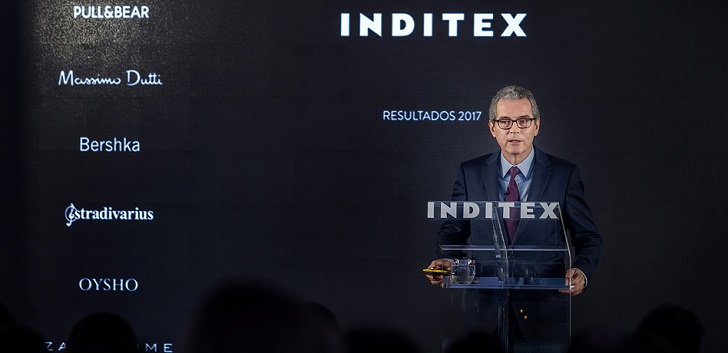Inditex, fighting against the cold and currency headwinds in a ‘small’ quarter
All eyes in the industry are on the biggest fashion retailer worldwide, who will present this week its financial results for the first quarter of fiscal 2018.

Cold, foreign currency and the brand new spring-summer collection hitting the stores. This is the scenario that Inditex faces in the first quarter, a relatively small period for the group in terms of sales and profit but with a big impact on gross margin for the Spanish giant. At the same time, the group pulled out of its hat the recently completed store reorganization plan during the last annual results’ presentation, what card will it play now, all eyes in the industry set on the company?
The first quarter, which covers February to April, is traditionally the less relevant to Inditex in sales and profit, because it includes the start of the spring-summer campaign, with lower average unit prices. In the first three months of fiscal year 2017, the group posted a turnover of 5.5 billion euros and net income reached 654 million euros, compared to 6.3 billion euros in sales and 975 million euros in profit in the third quarter, the most important for the company.
However, the first quarter of the fiscal year does have a significant contribution to gross margin, since it’s the only period, together with the third quarter, in which the bulk of sales are at full price. In the first quarter of 2017, Inditex’s gross margin rose to 58.2% on sales, slightly behind the third, which stood at 59.4%.
For the start of fiscal 2018, analysts are cautious in their forecasts. Bankinter highlights “the strong competitive environment” in which the company operates, and foresees a flat evolution of both ebitda and net profit.
Renta 4, on the other hand, emphasizes the negative impact of the euro strength and forecasts an increase of 1% in ebitda and a 2% fall in net income. The investment bank expects a 4% raise in like-for-like sales.
Between February 1 and March 11, Inditex sales at constant exchange rates grew 9%, while like-for-like went up 3%, according to analysts’ estimates. The upsurge contrasts with the 13% increase registered in the same period of 2017.
Unrivalled on the podium
Inditex results are much awaited, due to the general context of widespread sales declines among fashion players. Its biggest rival, H&M, is going through a restructuring process and has posted two consecutive quarters of falling revenues.
In the first quarter of 2018 (which isn’t comparable with Inditex, since it starts in December and ends in February), the Swedish behemoth sales decreased by 1.71% and net income plummeted by 44.16%.
After years of restructuring, Gap’s results are recovering. In the first quarter of its fiscal year (between February and April), the group posted a 9.97% rise in revenues and gained 14.7% more than in the same period of last year. However, Gap’s financial figures continue to be light years away from those of Inditex.
Fast Retailing, on the other hand, has a very different financial calendar. In the three months ended November 30, the Japanese retailer, owner of Uniqlo, increased its turnover by 16.7% to 617 billion yens (4.6 billion euros). The company’s net income rose 12.7% to 78.5 billion yens (587.4 million euros).


info@themds.com
Validation policy for comments:
MDS does not perform prior verification for the publication of comments. However, to prevent anonymous comments from affecting the rights of third parties without the ability to reply, all comments require a valid email address, which won’t be visible or shared.
Enter your name and email address to be able to comment on this news: once you click on the link you will find within your verification email, your comment will be published.